The objective of this assignment was to decode the logic for an existing parametric façade by setting up a step-by-step computational strategy.
The 2016 Serpentine Pavilion, designed by BIG was the selected façade system to be decoded by a computational strategy. The design of the Serpentine Pavilion consists of a straight line of tubular fiberglass bricks at the top which bifurcate into two undulating façades. The north-south elevation of the pavilion is rectilinear while the east-west elevation is a wave-like sculptural form (archdaily 2016).
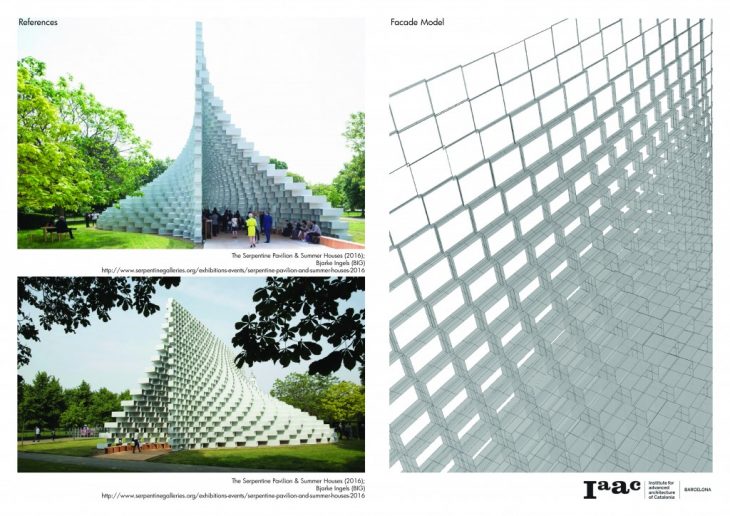
Strategy: The computational strategy adopted for this façade system comprises of the morphing of a rectangular hollow tube module on a surface, obtained through a loft operation between the two parallel surfaces of the tube module. The strategy involves the use of two parameters:
- The base curves for the undulating façade have been parameterized in order to achieve variable amplitude in the section curve of the façade.
- The grid obtained on the surface through the iso-trim operation determines the number and size of the box modules on the façade.
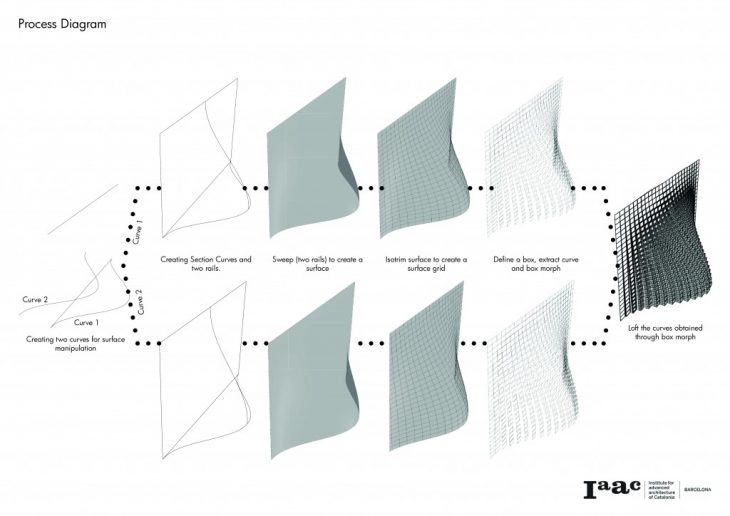
The grasshopper definition for the facade system has been illustrated in detail, below.
Step 1: Defining a line and generating the curve at the base of the undulating facade surface. Moving the generated curve, in order to achieve two surfaces that determine the length of the hollow tube module.
Step 2: Creating parametric Section Curves, determining the silhouette of the facade system.
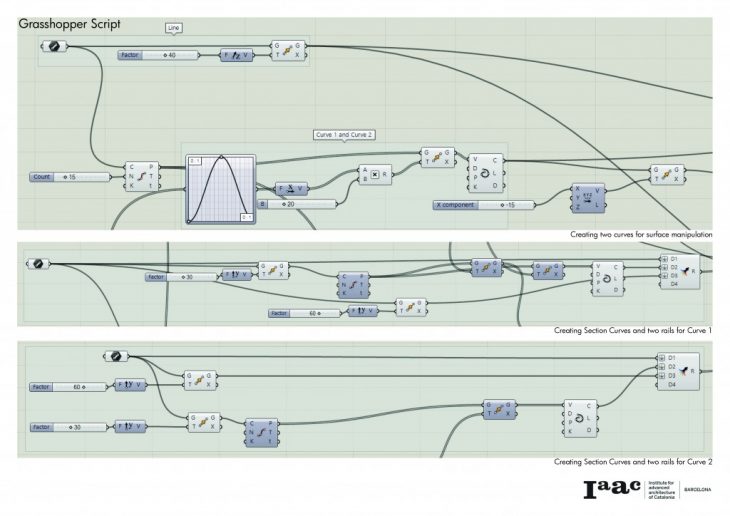
Step 3: Using the curves from Step 1 as rails and the curves from Step 2 as section curves, a surface can be generated by the sweep (two rails) operation. The same step is performed for the second set of curves to obtain an inner surface forming the end plane of the hollow rectangular tube modules.
Step 4: A surface grid can be developed using the isotrim operation on the surfaces obtained through Step 3. The grid determines the size of the hollow rectangular tube modules. The rectangular curve of the module can be projected along the surface using box morph. This step is repeated for the inner surface.
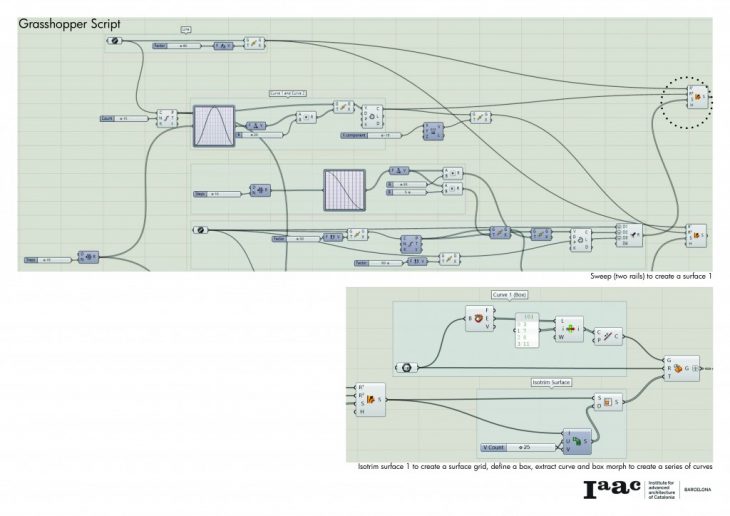
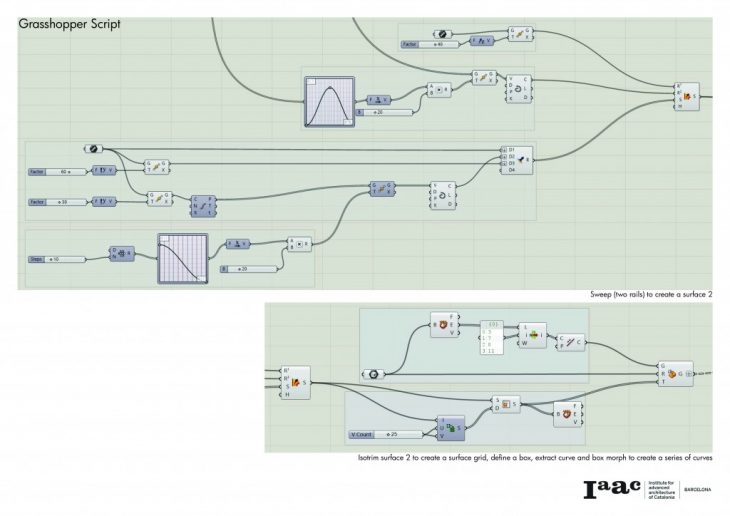
Step 5: The geometries obtained through the box morph in the previous step can be grafted and then lofted to create the hollow rectangular modules along the undulating surface.
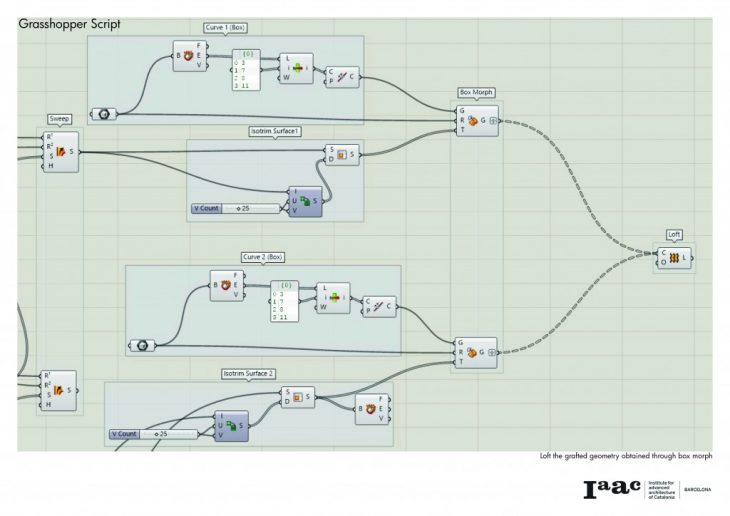
The final outcome is obtained by performing the loft operation as described in Step 5.
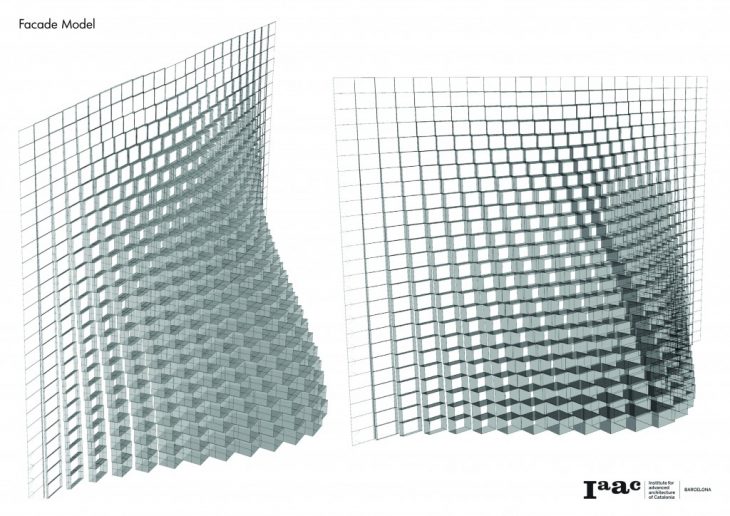
This exercise is part of the first assignment for the computational design studio (SO.03)
Faculty: Rodrigo Aguirre and Aldo Sollazzo.
Parametric Façade Exploration is a project of IaaC, Institute for Advanced Architecture of Catalonia developed at MAA01 in 2017-2018 by:
Student: Bhakti Vinod Loonawat
